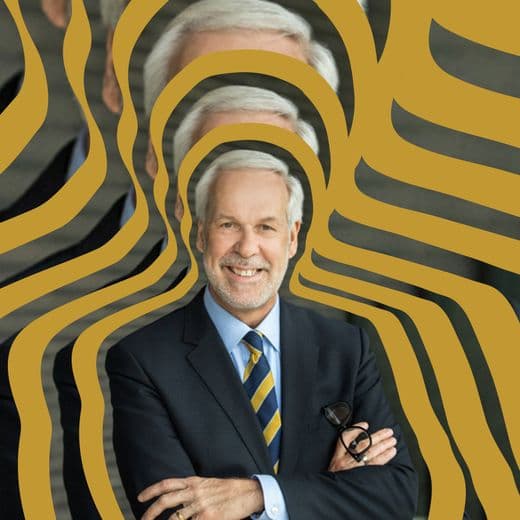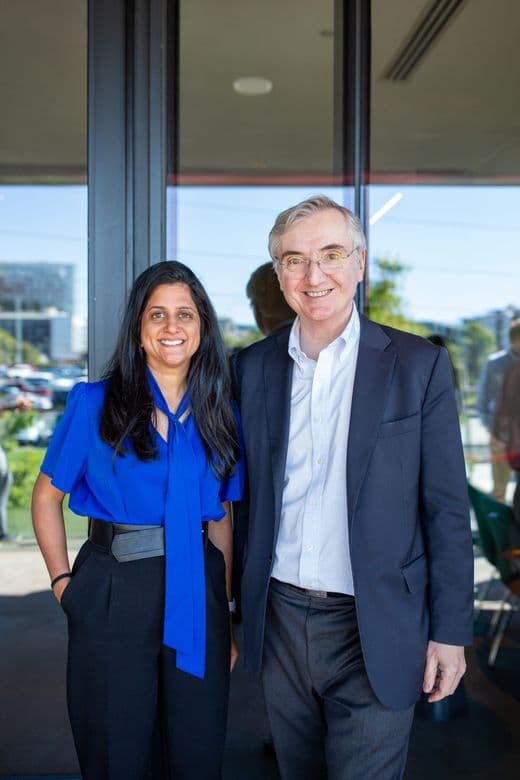Kelli Billstein |
The answer to the persistent question of how to solve a dire talent shortage could come from an unlikely demographic: workers over 50.
Across the globe, older worker populations are creating a silver tsunami: According to the Pew Research Center, the fastest growing demographic in the workforce is now people ages 75+. A recent report by the consulting firm Bain & Company predicts that by 2031, workers aged 55 and older will make up more than a quarter of the workforce in G7 countries. Employees in this age group represented 20% of the U.S. workforce in 2011, and that figure is expected to rise to 25% within the next eight years. In other words, by the end of the decade, we’ll see about 150 million jobs globally shift to older workers.
Guild’s own learner data underscores these trends. We examined the 50+ demographic to understand how those individuals in the latter half of their careers are leveraging learning and skilling from their employers to grow their careers. With a steady trend toward short-form learning like boot camps and certificates, Guild’s 50+ aged learners are harnessing valuable soft or durable skills, and even gaining critical emerging skills in AI. Notably, the certificate “AI Implications for Business Strategy” ranks among the top three selected by the 50+ demographic for the past two years.
 Indeed, we’re officially living in an era when people are not only living longer, healthier lives, but delaying retirement and working longer than ever before. The World Economic Forum calls it an “era of longevity.” Though the Baby Boomers and Generation X combined represent a smaller share of the workforce than millennials, they represent untapped potential for HR leaders leading workforce transformation.
Indeed, we’re officially living in an era when people are not only living longer, healthier lives, but delaying retirement and working longer than ever before. The World Economic Forum calls it an “era of longevity.” Though the Baby Boomers and Generation X combined represent a smaller share of the workforce than millennials, they represent untapped potential for HR leaders leading workforce transformation.
All of this raises a question: Are HR leaders factoring longevity into their workforce planning and L&D strategies? And another: Do HR leaders understand this demographic enough to make the most of its participation in the future workforce?
The new business imperative: Unlocking the value of people over 50
“Generations are clues, they’re not absolutes,” says Ryan Jenkins, generational strategist and author. “They’re very big clues on how you lead, communicate, sell, and deliver L&D. The better understanding we have of each generation, the better equipped we are to do all those things in today’s multigenerational marketplace.”
In analyzing various research workforce studies, we’ve identified four attributes workers over 50 possess that may correct misimpressions about an increasingly powerful cohort of our multi-generational workforce.
1. Older workers are willing to learn new skills.
Not only are older workers learning new skills, but they’re also interested in future training through their employers. They’re particularly keen to gain in-demand skills (e.g., technology, computer skills, professional skills, and licensing). This, combined with the lateral thinking, pattern recognition, and wisdom that only comes with age and experience, makes for especially rich and nuanced learning among an older worker population.
Guild’s data reveals that learners ages 50+ closely match younger learners’ persistence rates in learning programs. And interviews with learners suggest that older learners have a special appreciation for the opportunity to learn, and therefore apply themselves more intensely to learning.
“I wanted to prove to myself that I can make it in college. I'm happy to say the lowest grade I got was a C+ on one of my assignments… Actually, [for the first] time in my life, I made Dean's honor roll. I had never made any kind of honor roll in high school or junior college… I was on top of the world at that time. I was like, wow, I'm really doing this thing here, you know?” - John W.
“[I applied to] an 8-week program and I was like, ‘I'll give it a go and see if I like it.’ And I've been really surprised, I think time and life gives you a different perspective when you're learning stuff that applies to what you're doing.” - Lisa C.
This willingness to learn carries through to new technology. As Pew has found, the share of those 65 and older who are tech users has actually grown in the last decade. And, for many, honed adaptability and continuous learning make older workers well-suited to learning new technology. Guild’s data bears this out.
2. Older workers are ready to embrace change.
There’s no evidence that older workers are too set in their ways. MHS research finds that older adults (i.e., people aged 60+) were no more or less resistant to change when compared to younger adults (i.e., people aged 20-29). And, in fact, one study revealed that older workers are actually more resilient to conflict and change related to work-life balance than younger people.
3. Older workers are motivated and engaged.
Motivation at work spills into employee engagement, defined by Gallup as “the involvement and enthusiasm of employees in their workplace.” It’s a measure that predicts many outcomes across business units within companies, including quality of work, safety, and profitability. In short, it’s critically important. Yet, Gallup recently reported that organizations are currently experiencing a 10-year low in employee engagement — and it’s the population of those ages 35 and younger who are inflicting the most harm by being the least engaged and most detached from their employers. In fact, a 2022 survey from Gallup found that Baby Boomers have the highest levels of engagement and lowest levels of burnout at work.
4. Older workers will stick around.
The perception that older workers won’t “last” as long because they’re sure to have one foot out the door (either because of health or the desire to retire) is unfounded. In fact, research finds that older workers are less likely to quit a job than younger workers.
For those older workers in your employee population who don’t plan to retire at the anticipated time, their career timeline may be completely different. And with more years ahead of them, there’s more time to consider second acts and new career pathways within your organization — rewiring instead of retiring. This is where reskilling comes in.
Designing a proactive L&D strategy for the longevity era
A multigenerational workforce can be your organization’s super power, with the oldest generations often providing the most wisdom, experience, mentorship, and leadership contributions. Recognizing this as a key strength and growth catalyst for your business could inform how you customize your learning solutions as well as how you think about career pathways and reskilling your workforce.
Based on our research of the 50+ cohort and Guild’s experience serving older learners, here are a few tactics for companies looking to lean into this fast-growing talent pool.
Collect and use data smartly.
Business leaders can leverage their own private data about their workforce demographics to get a read on where they’re at today. They can also use methodologies such as surveys to get a pulse check on their employee populations, then consider how to accommodate their learning and development needs. This is where a longevity strategy weaves into an existing talent strategy and L&D initiatives. It’s worth considering the compounded value that older workers’ years of experience might add to skills honed through short-form learning in areas such as leadership or management.
Prioritize institutional-knowledge capture.
Brain drain is a true issue, affecting many industries and businesses, but it also does us the favor of igniting urgency to recognize the value of older workers and perhaps even get creative about how to capture their valuable institutional knowledge.
Instead of focusing on what businesses can still gain from older workers, we tend to hear more about the devastating loss of institutional knowledge that business leaders fear as older workers retire. In the manufacturing industry, for example, 97% of organizations are concerned about brain drain, considering it a serious threat to their operations.
Take advantage of the mentorship (and reverse mentorship) opportunities.
With a more age-diverse multigenerational workforce, there’s opportunity for mentorship, innovation, and leadership development. The best case scenario will be a cross-pollination of mentorship (and reverse mentorship) and learning opportunities, where younger generations and older generations can have an exchange. For example, Gen Z workers may well trade digital intelligence for Baby Boomers' emotional intelligence and experience. Rewiring (not retiring).
HR leaders that recognize the potential of this demographic and craft L&D solutions to complement its strengths and accommodate its needs will position themselves to succeed in the future of work.
“At a time when labor shortages are emerging, due in part to new restrictive immigration policies, while there simultaneously exists a demographically aging workforce that declares they want to delay retirement, it’s shocking to see so few company leaders think expansively age-wise about how they can attract and retain both the smartest and the wisest,” writes Chip Conley, founder of Modern Elder Academy and former Airbnb head of global hospitality and strategy, in his book “Wisdom at Work.”
In the midst of a growing talent crisis across many industries, business leaders can’t afford not to consider all avenues to support their growth. HR leaders should view older workers through the lens of longevity.



